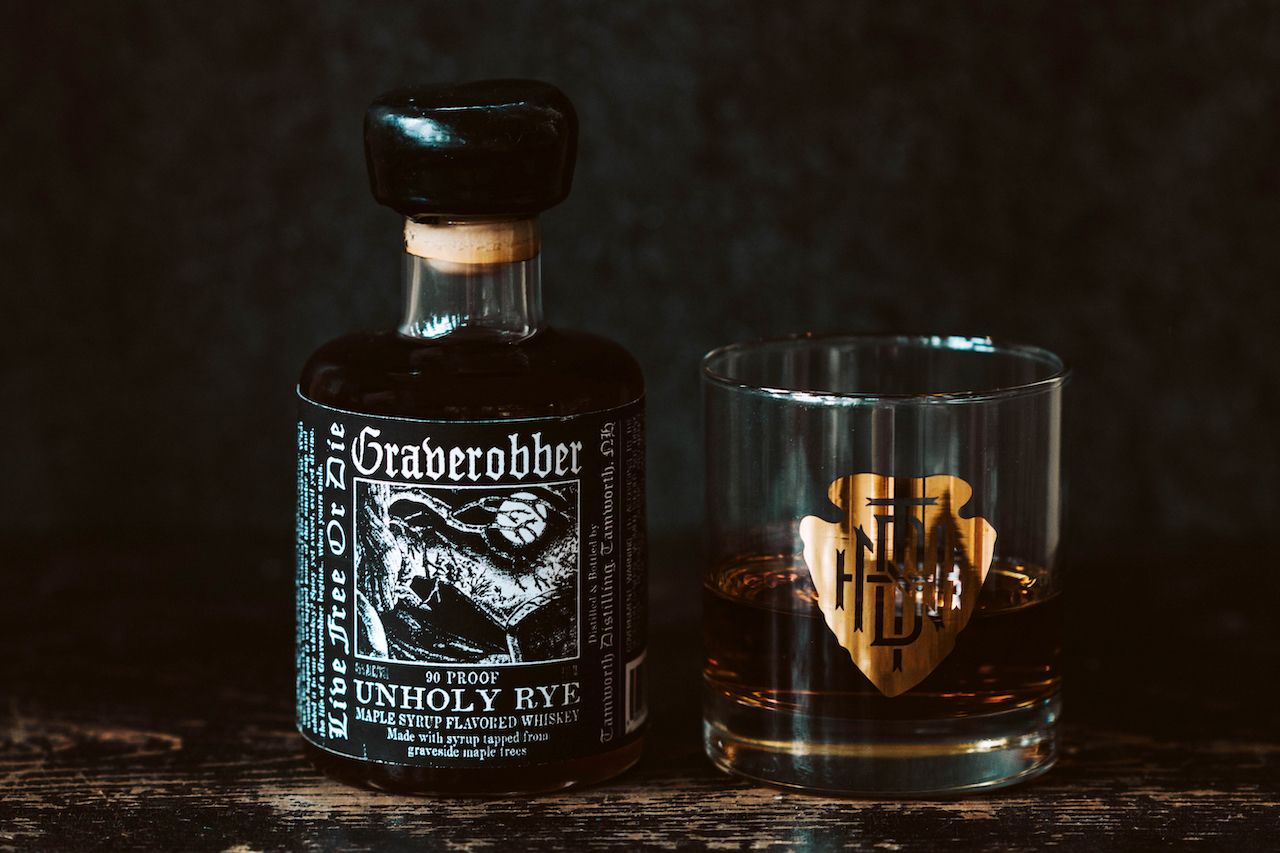Sometimes the most fun thing about a superstition is tempting fate and going against it.
In the early 2010s, Jamie Oakes, master distiller at Tamworth Distilling, was tapping the maple trees at Great Hill Farm near Tamworth, New Hampshire. The procession of maples he was working on included some trees that were more than 100 years old, and all led up to the farmhouse. Oakes was shadowing an older local man, taking photos of him as the crew worked their way down the line. About two-thirds of the way through, he reached an old knobby maple on the eastern side that sat on top of a plot of barely marked headstones in a 30-square-foot cemetery. Just before he drilled in, the local man stopped him.

